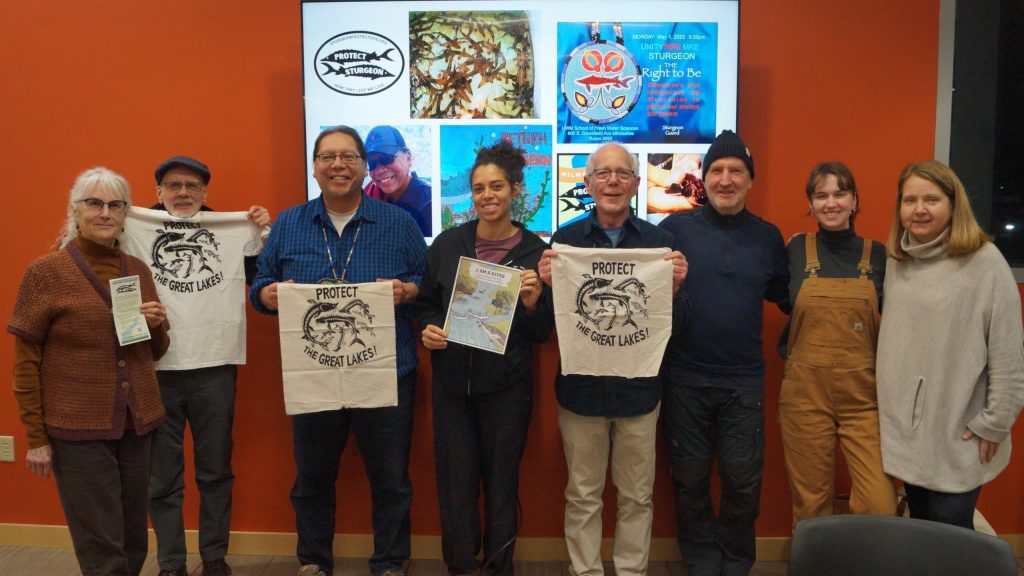For the first time in many years, sturgeon are returning to our rivers.
This has been the result of efforts by many groups, which Michael Timm reflects on in his recent article published in Urban Milwaukee: “Why do we care about the Sturgeon?”
When Sturgeon return home, we should be thinking about what kind of home that place will be. Like us, as Native people, sturgeon had been removed from their original homelands…so now our relatives are able to return, but return to what?
Mark Denning
We have summarized a few key points in the article below. The full article can be found here: https://refloh2o.com/water-stories
One of the groups that has been instrumental in the return of the sturgeon are the Milwaukee Sturgeon Protectors which use both native knowledge and environmental science to help heal the river. Mark Denning, a member of the Sturgeon Clan in the Oneida Tribe of Wisconsin wrote “When Sturgeon return home, we should be thinking about what kind of home that place will be. Like us, as Native people, sturgeon had been removed from their original homelands…so now our relatives are able to return, but return to what?”
The ability of our rivers to support spawning sturgeon has been on the minds not only of
Sturgeon Protector members, but also children in nature science classes. Children are involved not only in measuring water quality through their classes, but they are also some of the most enthusiastic sturgeon releasers during Sturgeon Fest. To learn more about the Sturgeon Protectors, please contact them at https://sturgeonprotectors.org
Education and awareness are key parts of the ethos of the Sturgeon Protectors, who were
inspired by literal protectors preventing poaching during spawning season. The Sturgeon
Protectors have many members from different environmental organizations around Milwaukee
including Riverkeeper, Friends of Lakeshore State Park , UW-Milwaukee School of Freshwater Sciences, and Wisconsin Green Fire, among others. The repair of our riparian environment is not only beneficial for Sturgeon, but for other native fish – and humans too. These long-lived fish will hopefully return to cleaner rivers that will continue on the path of restoration as the next generation becomes involved in their protection”
